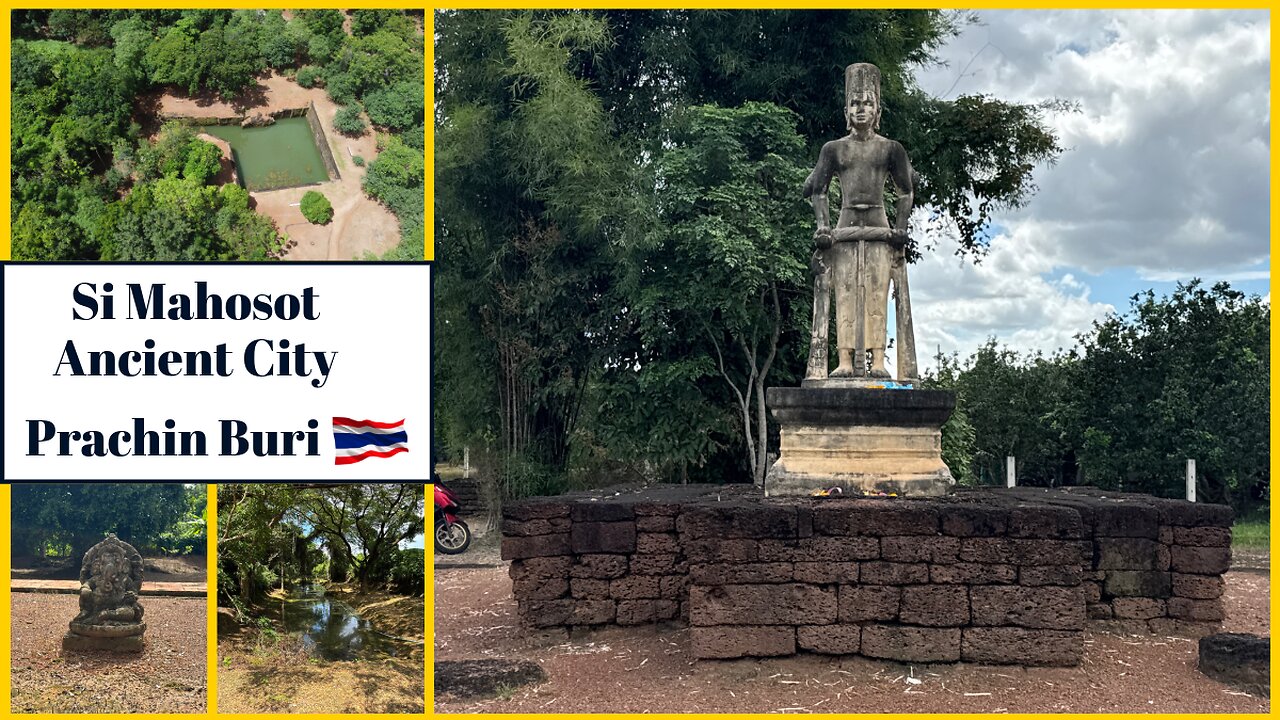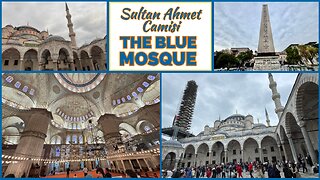Premium Only Content

Lost Dvaravati City: Uncovering Si Mahosot’s 1,000-Year Secrets in Thailand
Si Mahosot was a significant urban and cultural center in the Dvaravati civilization, a Mon-dominated culture that shaped early Thailand through trade, religion, and governance. It later came under Khmer influence, reflecting its strategic importance in Southeast Asia.
Historical Development
1. Dvaravati Origins (6th–8th Centuries):
• Si Mahosot emerged as a key city in the Dvaravati kingdom, a loose network of Mon city-states in central and eastern Thailand.
• It was a hub for trade and cultural exchange, connecting India, China, and other Southeast Asian regions via maritime and overland routes.
• Archaeological evidence shows a fortified city with moats and earthen walls, suggesting defense needs and centralized planning.
• The city thrived on agriculture (rice farming in fertile plains) and craftsmanship, with pottery, beads, and metalwork found in excavations.
2. Khmer Influence (9th–13th Centuries):
• By the 9th century, Si Mahosot came under the expanding Khmer Empire (centered in Angkor, Cambodia).
• The Khmer left architectural and cultural marks, including small shrines and structures like Sa Kaeo, Sa Khwan, and Sa Morakot, built for religious and communal purposes.
• A notable find is an arokaya sala (hospital or rest house), attributed to Khmer King Jayavarman VII (reigned 1181–1218 CE). This reflects his policy of building welfare facilities to strengthen ties with local populations.
• Inscriptions and artifacts, such as a 6th–8th century lingam (Shiva symbol) now in the Prachinburi National Museum, show a blend of Hindu Shaivism and Buddhist practices.
3. Decline and Rediscovery:
• The city declined after the 13th century, likely due to the rise of new Thai kingdoms (e.g., Sukhothai and Ayutthaya) and shifts in trade routes.
• Si Mahosot was abandoned and reclaimed by forests, with sites like Dong Si Mahosot (a forested area) preserving ruins.
• Rediscovered in the 20th century, systematic excavations by Thailand’s Fine Arts Department revealed over 538 archaeological sites, including residential areas, shrines, and infrastructure.
Cultural and Economic Role
• Trade Hub: Si Mahosot’s location near ancient routes made it a nexus for commerce. Excavations uncovered trade goods like beads and ceramics, indicating links with India and China.
• Religion: The city hosted a mix of Theravada and Mahayana Buddhism alongside Hinduism (Shaivism), evident in temple ruins and artifacts like votive tablets and statues.
• Urban Planning: The moated layout and evidence of communal spaces suggest a sophisticated society with administrative control.
Significance Today
• Si Mahosot offers insights into the Dvaravati-Khmer transition, showing how Mon and Khmer cultures shaped early Thai identity.
• Artifacts are displayed at the Prachinburi National Museum, and the site is part of Thailand’s efforts to preserve Dvaravati heritage.
• As of 2025, ongoing restoration and eco-tourism initiatives aim to make Si Mahosot more accessible.
Enjoy the video!
If you would like to support the channel through unique items only found here visit my store
https://youtube.com/channel/UC7Nk0oxkpoyOXvZ-BESD6-g/store
You can also see my videos on Rumble, Bitchute, Odysee and Subscribe Star. If you have any questions or comments and wish to contact me directly I can be reached by email at [email protected]
https://www.bitchute.com/channel/pYUe8EgYcUMc/
https://odysee.com/$/latest/@EndlessJourney
https://rumble.com/c/EndlessJourney
https://www.subscribestar.com/endless-journey
Follow me on Twitter @AEndlessJourney
#endlessjourney
#travel
#thailand
-
 11:36
11:36
Endless Journey
4 days agoThe Blue Mosque: Istanbul’s Dazzling Icon & UNESCO World Heritage Site - Turkey 2025
6 -
 LIVE
LIVE
Glenn Greenwald
4 hours agoGlenn Takes Your Questions on Major Saudi Arabia Celeb Controversies, Zohran Mamdani and the NYC Debate, Anti-ICE Protests, and More | SYSTEM UPDATE #533
5,205 watching -

BonginoReport
3 hours agoMichelle Obama Admits Affirmative Action Is A Scam - Nightly Scroll w/ Hayley Caronia (Ep.158)
25.5K13 -
 1:11:40
1:11:40
Kim Iversen
3 hours agoZelensky BLINDSIDED By Trump In White House Meeting | UK Bans RACIST JEWS From Attending Soccer Match
61.3K79 -
 LIVE
LIVE
The Jimmy Dore Show
2 hours agoJohn Bolton Staring At LIFE IN PRISON! Kash Patel Pushes PURE BS Line About Kirk Assassination!
8,494 watching -
 LIVE
LIVE
Nerdrotic
4 hours ago $10.05 earnedRacist Academics Attack Tolkien | Hollywood to Strike AGAIN? | AI Doomsday - Friday Night Tights 376
2,362 watching -
 9:32:02
9:32:02
Dr Disrespect
10 hours ago🔴LIVE - DR DISRESPECT - ARC RAIDERS - THE ULTRA EXTRACTION GAME
143K10 -
 27:49
27:49
Robbi On The Record
21 hours ago $5.34 earnedRevelation, the End Times, and Satan’s Little Season part II - ft JT
25K6 -
 54:37
54:37
HotZone
4 days ago $1.64 earnedTen Hostages Missing! Will Hamas Keep Its Word?
27.1K4 -
 8:05
8:05
Rethinking the Dollar
8 hours agoFiat’s Endgame? Gold & Silver Lines Don't Lie
14.7K6